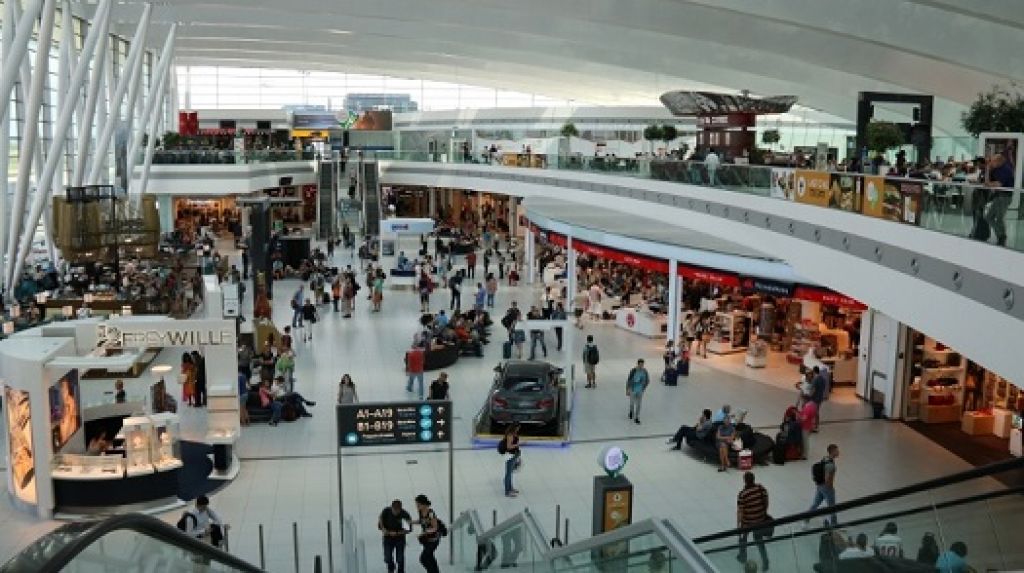Ready to Take Off!
Budapest Ferenc Liszt Airport is serving the Hungarian capital city of Budapest and by far the largest of the country’s four commercial airports. The airport won the prestigious Skytrax “Best Airport in the Region” for the fourth time in a row.
In 1938, the idea of building a new airport in Budapest arose. In December 1939, upon announcement of the results of the tender, the designs of Károly Dávid Jr. were judged to be the most appropriate for implementation. Based on his fascinating design which resembled a large aircraft, works commenced in 1942. At that time, the airline operated only a few foreign flights, in particular to Prague, Bucharest, Warsaw and Sofia. The first scheduled flight departing from the airport to the West was Malév’s flight to Vienna in the summer of 1956. The first Western airline to launch a flight to Budapest was KLM Royal Dutch Airlines, in 1957. The terminal building was finished during this period, and the 2500-meter-long runway was lengthened, to accommodate larger aircrafts. The 3010 m runway and taxiwaywere completed at the end of 1958.

There was a new infrastructure for growing demand between 1980 and 2000. In 1980, the number of landings and passengers reached 32,642 and 1,780,000, respectively. In 1990, the airport registered more than 40 000 take-offs and landings, served 2.5 million passengers and controlled 75 000 aircraft in Hungary’s airspace. The latter number increased manifold, to over 350 000 by the end of 1995. After 2014, the airport reached new annual passenger traffic records in 2015 and 2016 as well, when it managed to exceed 9, 10 and then 11 million passengers for the first time in its history. The rapid growth spurred the operator to implement more developments, and at the beginning of 2016, it announced a five-year development plan called BUD 2020. For the efficient handling of passenger traffic, the construction of a new baggage sorting hall also commenced, where the bags of departing passengers can be screened on a larger area, with the latest technology.
For Budapest Airport, it is a primary consideration during developments to provide a passenger-friendly environment, in addition to the highest level of safety and security.

Getting on board with technology
Budapest Airport is one of the most important strategic facilities in Hungary and a stable player of the Hungarian economy. It is also one of the largest and most attractive employers in Hungary. They operate responsibly, safely, sustainably, as a good neighbor. As a large employer, they not only employ the approximately 1200 employees of the BUD group, but they are also responsible for the 50 000 staff of another 220 service providers and partners.

Budapest Airport is continuously expanding its route network. At the end of 2019, 153 destinations in 49 countries were accessible from the airport directly. In 2019, they welcomed 16.2 million passengers, and Budapest Airport serves this dynamic growth in passenger traffic with continuous developments.

Budapest Airport has an excellent track record in service quality, which has been recognized with the Skytrax award of “best airport in the region” seven times in a row.
To ensure a safe and flawless travel experience a practical decision was made to upgrade to a more modern technology in terms of their control rooms for securing the airport.
Large property development projects were started in the area of Ferenc Liszt Airport to keep up with increasing aircraft andpassenger traffic. Construction of extra shopping area and a new terminal building required extra control facilities also. Implementation of the new security, supervision and airport traffic management center required collection of different information:
- Video camera signals,
- Security camera pictures,
- Data from airport servers,
- Data from SCADA systems,
- Information from operator workstations.
Gain insight, be in control
The centralized information processing and active airport management jobs were solved by two 9-screen video walls and several operators sitting in the control rooms. The video walls were built up from 18 pieces of 46" TFT/LCD monitors from NEC arranged in 3x3 layout each. The multi-display walls were controlled by a single DXN3200 Controller from DEXON Systems as ideal solution for the job.
Real time display, immediate action and high reliability must have been assured by the advanced DEXON controller and the 2 large video walls. The walls displayed all the required information in front of operators who were able to control the layout of the wall remotely. The supervision and control rooms were equipped with DEXON Systems’ large software system.

The DXWall software suite contains different packages for centralized information processing, operator interaction, wall layout management and remote control. Easy-to-use graphics user interfaces guarantee the efficient airport management process for a large number of remote operators.
DEXON Systems work on multi-screen video display projects since 1996 and today it is one of the best-known developers and manufacturer of advanced video wall controllers on the market. DEXON’s controllers provide high-quality video display in real time according to the operator requirements. All the controllers and parts are manufactured for 24/7 operation.

DEXON Systems’ controller’s ideal solution for managing data and video display could be integrated with airport requirements successfully. The project met the very high safety requirements and gave an additional reassurance provided by the video surveillance system. In addition, the successful project also created the basis for extending the security network. The representative of Kesz ZRT, the system integrator corporation, Mr. Karoly Kertesz said:
We were amazed and satisfied with the video wall controllers’ capabilities and the services of the complex hardware and software system. The installation process went smoothly because we received all the required hardware and software modules that were needed for a control room installation. The operators could learn the application of user interfaces quickly.